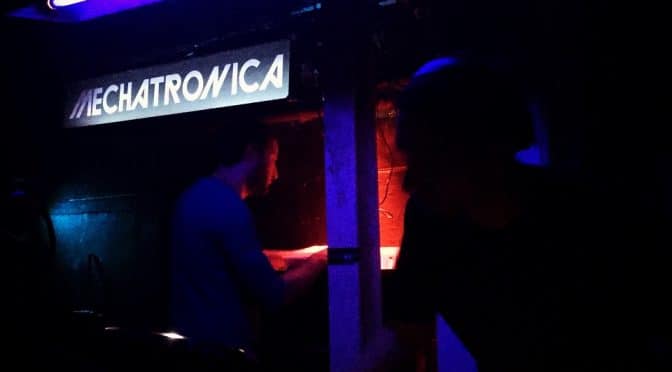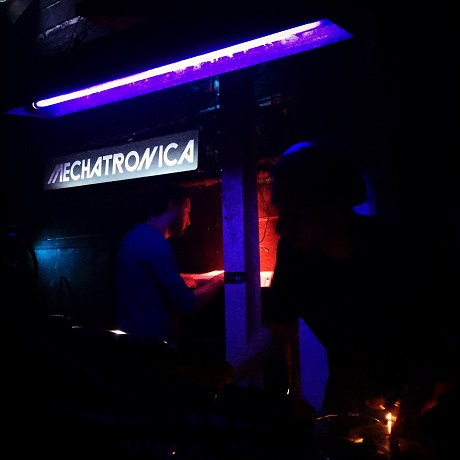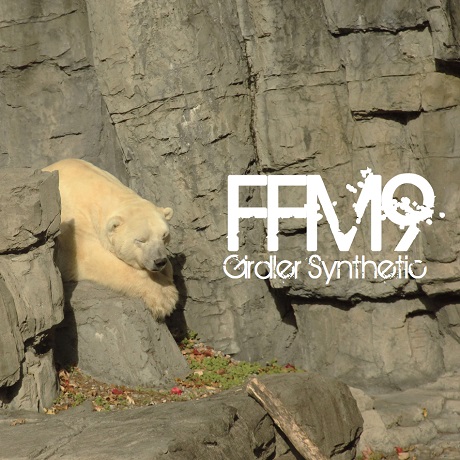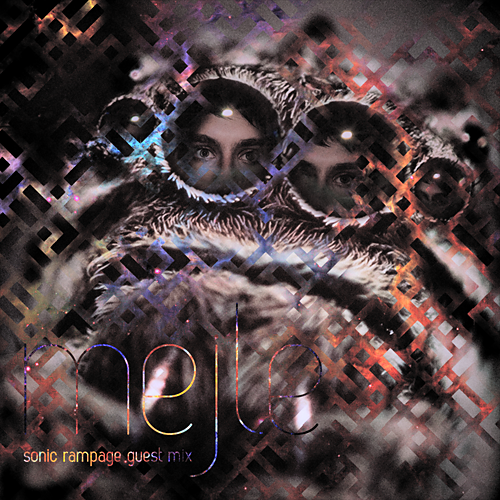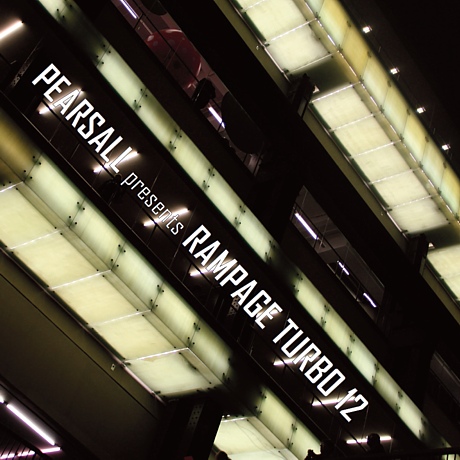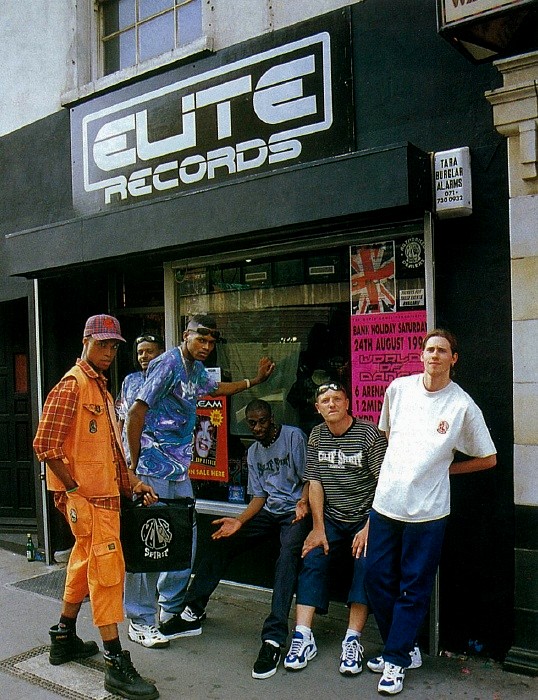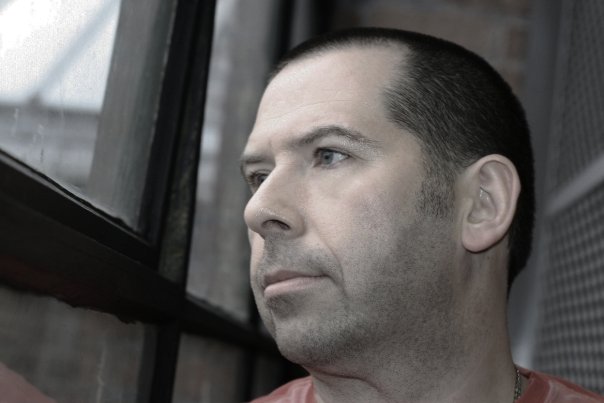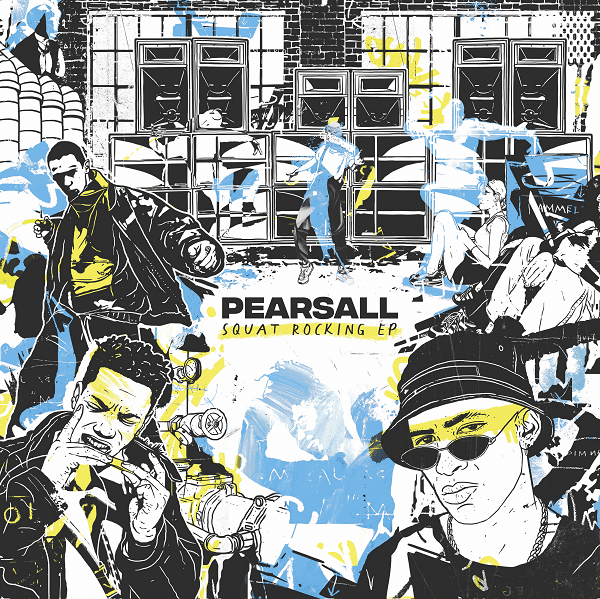
I’ve got some very exciting news! After 25 years of being purely a dj, I’m super super excited to present my debut EP. It’s a very special thing to mark 25 years in the game, and it’s now available to buy on vinyl and digital via Bandcamp and Discogs.
If you want the short version of what’s going on here, this is it – if you want the long version, I’ve written an interview with myself (lol) below that where I really get into the detail of what’s going on here.
Short version: I’ve been a dj for 25 years and I wanted to make an EP. The stars aligned late last year and I had the opportunity to work remotely with UK freeform producer A.B – in two weeks of remote work we made the four tracks on this EP. The general idea behind it is that I wanted to dig into my record collection to come up with four super sample-heavy techno tracks that really captured the vibe and essence of the London squat party scene, especially from the late 90’s to early 2000’s when I used to go out on it. I’ve since commissioned a cover by Berlin-based Scottish artist Nick Cocozza and gotten it pressed to vinyl. Holding my own record in my hands was truly a special moment for me!
These are the four tracks:
- Underground Sound (140 bpm) – A thumping techno banger that takes many twists and turns, drawing as it does on samples from a wide range of electronic music styles
- Pendulum (140 bpm) – Acid techno meets ’93 hardcore in a full-on euphoric rave face-melter
- Undertow (145 bpm) – Vintage acid trance sounds layered over a stomping modern techno beat
- Crossbones (150 bpm) – Hard techno meets gabba meets dark drum n’ bass meets your brain blasting out of your ears
So that’s the short version!
Here’s the long version – as a bit of a laugh I decided to interview myself, the better to tell the story of this EP. It’s kind of ridiculous, but why not, eh?
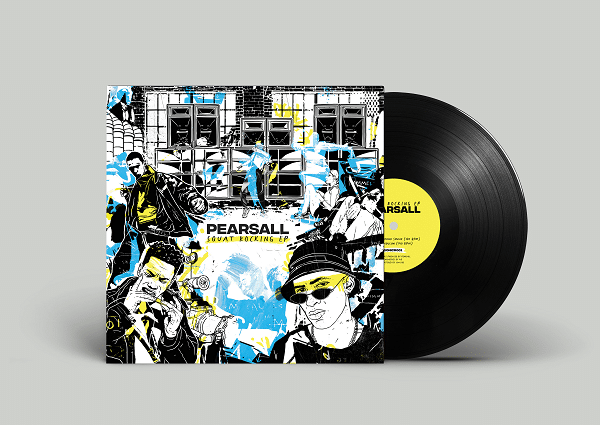
Randall Helms: So what’s going on here? Why’d you make an EP?
Pearsall: I’ve been a dj since I was 16 and, as of today, I’m 41 (gulp) and, frankly, as someone who has been a vinyl junkie for decades, I’ve always wanted to hold my ‘own’ record in my hands. Over the last few years I’ve been thinking about it a bit more and finally the stars aligned to make it possible. And here we are!
And I’ve kind of joked about this record as some kind of midlife crisis activity – like saying on the back cover notes that it’s cheaper than buying a sports car – but that’s not what this is about.
Really this is about doing something creative that I’ve always wanted to do, and actually following through when the opportunity presented itself. As I said before the stars aligned unexpectedly – suddenly I had the time, I had the means, and I had the idea – and I made it happen!
RH: Can you elaborate on what you mean by having the the time, the means and the idea?
P: Sure, but before I do I want to give some context about where this is all coming from.
I’ve been a dj for so many years and music has always played a key role in my life. I love music, especially electronic music, and it’s been by far the most durable interest that I’ve had, starting from when I was barely into double digits. I’m not really a religious or spiritual person, so I suppose music has been how I’ve experienced transcendant / emotional feelings. It’s deeply meaningful to me.
Music has been something that has been and still is deeply woven into the fabric of my life. I’m constantly buying music, listening to music, thinking about music – every day of my life involves music in one way, shape or form. If I’m working, I’m always listening to music with at least one earphone in, unless I’m in a meeting and can’t! If I’m taking a long walk, I’m listening to music. If I’m cooking, music. On the train, music. It’s always there.
So with that in mind the one gap, the one thing missing, has always been making my own music. It’s something I’ve always been halfway interested in, but never to the degree that I wanted to make the effort required to learn how. It’s always seemed like a very steep learning curve! Learning how to produce electronic music myself has always seemed like something that would require a solid amount of money, time, and effort, and I don’t think there’s ever been a point in my adult life where I had the right combination of all three.
When I was younger, I had the time but I didn’t really have the money to buy lots of synths, and I didn’t want to forgo buying records to get the equipment needed to make tracks. I spent some time messing around making tracks with my friend Jamie at his home studio in Barnet, but we never really managed to get the tracks we made to a very high standard. Nor did I really want to make the effort to learn, especially because in the early 00’s there weren’t anywhere near as many resources available to learn how to produce. There were magazines and internet forums, but nothing like the vast array of podcasts and YouTube tutorials that a budding producer can call on in 2021.
Today, production has become much more affordable, in that you don’t need to buy racks and racks of synths, but can simply install a bunch of soft syths on a laptop, but I simply don’t have the time to learn. Between having a pretty demanding job and a family, I just do not have the time for experimentation and exploration that I need (or at least I think you need) to learn how to produce electronic music.
RH: So, um, it sounds like the one common thing is that you’ve never wanted to make the effort to learn.
P: Yeah, that’s fair. I’m lazy, I guess – at least on this topic.
RH: So you could have just said you never wanted to make the effort! And you didn’t even answer the question I asked you, about having the means, the time, and the idea.
P: OK OK OK – I was getting there!
So the story of this EP, what I mean by the stars aligning, is that it’s really a byproduct of the Covid-19 crisis.
Firstly, one blessing is that I’m at a point in my career where I can make a small investment into a creative project like this where the goal is purely personal fulfillment. That’s pretty sweet!
The next point is about having the time; this is huge, because usually I don’t have much free time for myself. Without getting into too much of the backstory, I realized in late August 2020 that I would not be able to go to the US in October for my sister’s wedding, of course due to Covid, and this meant that I suddenly had two weeks of vacation booked in October with nothing planned.
By what I think was some kind of incredible luck or serendipity, I was scrolling my Facebook feed around this time and saw that I saw that UK trance / freeform hardcore producer Alex Bailey (aka A.B) was offering remote studio sessions from his studio in Kent, SE England. Years before I’d spent a day at his studio in Bromley making the track ‘Dreaming of Berlin’, which had been released digitally on a Freeformaniacs compilation, but that had involved me taking the train to his studio. Now I could do this without ever leaving Berlin … I had the means to do it!
Here, suddenly, was the confluence of time and opportunity that I needed to make not just a single track but a full EP!
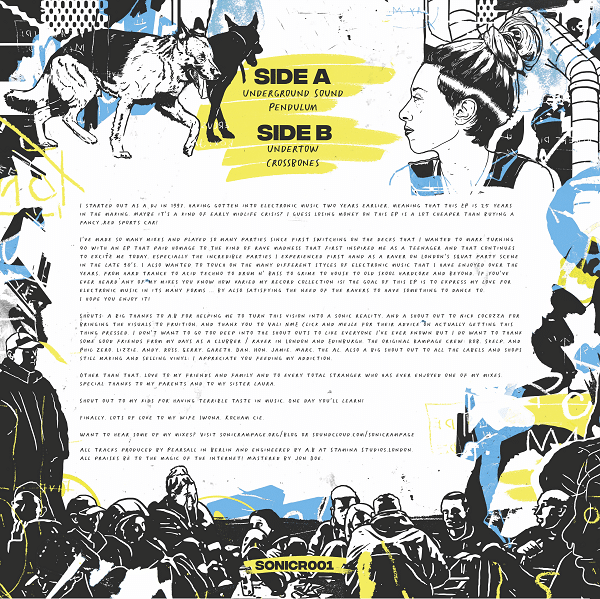
RH: That’s cool and all, but you mentioned an idea – what was the idea?
P: I was getting there!
RH: Not very quickly …
P: OK, fair, I do tend to ramble a bit …
So the idea was one I had had for a while, without really knowing how to turn it into reality.
The basic idea can be summed up as ‘SMD goes to a late 90’s squat party’. Are you familiar with SMD?
RH: Um, yes. I am you, after all.
P: True true.
So for those who don’t know, SMD was a side project of rave legend Slipmatt – it stands for ‘Slipmatt Dubs’, and it was used as the artist and label name for a series of quasi-bootlegs that he released starting in 1993. These are some of the most famous old skool hardcore tracks of all time; think samples piled giddily on top of each other to generate a fully bonkers hands-in-the-air rave meltdown. Along with Dave Charlesworth’s similar Energizer series, each of is a ravetastic audio rollercoaster, with the listener experiencing a kind of whiplash as riffs constantly enter and exit.
These tracks are particular examples, but more generally I’ve always been fascinated by sampling in general, by the idea of repurposing bits of music in a new context, and especially by the work of people like DJ Shadow, who built their careers out of layering up samples from all kinds of disparate sources into a new and cohesive whole.
Separately, I’ve always been very interested in the world of the London squat party scene, which I first entered at a party in an abandoned warehouse in Kennington, south London in June 1998. This is no secret – I’ve been recording my Squat Rocking series of mixes for close to 15 years now and I’ve written extensively about squat parties, not just in terms of my own experiences, but also via my interview with Chris Liberator and via Marc Mewshaw’s guest essay that I posted a few years back.
My Squat Rocking mix series has been about trying to capture the range of sounds that I would hear at a typical squat party – acid techno, of course, but also hard trance, hard techno, drum n’ bass, gabba, and beyond. Over the course of the ten mixes in the series, I’ve tried to explore these sounds from different angles, covering different genres, running tributes, and so on. It’s a pretty long-running project at this point, and it constitutes a body of work that I’m quite proud of, and as such I’m always thinking of new angles to explore, which is where the idea came from a few years ago to make a mix of new music that would fit in the ethos of the series.
This, obviously, leads to the question of ‘what new music would fit?’ This then led to the thought of ‘maybe I could make some myself?’ Then at this point a lightbulb went off in my head that maybe, just maybe, something that could be cool to do would be to make an SMD-style sample frenzy, but with the kind of sounds I would hear at a squat party back in the day.
I thought this was a pretty cool idea (I still do …) but I wasn’t sure what to do with it, so it kind of sat there in my mind marinating slowly, with the occasional half-hearted effort at contacting engineers my only work towards making it a reality … basically until I saw Alex’s Facebook message.
Luck or fate? You decide!
RH: What is it about the free party scene that you find so interesting?
P: Well, I guess that it’s a little weird that squat parties have had such an impact on my life, since I only went for maybe three years or so. It’s not like this is something I’m still doing! It’s probably around twenty years since I’ve even been to one …
I guess the key thing is that even though this wasn’t a long period of my life, squat parties were nevertheless quite seminal experiences. These parties were intense and different and contradictory – they could be incredibly euphoric and life-affirming, but also sinister and even scary. I saw moments of incredible beauty as well as things that were simply dark, but above all I guess what was so powerful about them was that they seemed to exist outside of the normal structures of life. As someone from what is in many respects a very conservative family, this was a doorway into an alternate world where things functioned differently. These parties were temporary autonomous zones outside of the normal realm of legality and as such you could observe how people would behave in a situation that was free, really free. Sometimes the results weren’t pretty! But it was definitely free in a way that a ‘normal’ club with a strict closing time and bouncers and jacked-up prices at the bar are not free.
And this doesn’t just pertain to drugs – drugs were more openly available and consumed at squat parties than in legal clubs, sure, but this was for the most part just a cosmetic difference. When I reference ‘freedom’ here, it’s really a whole package of things beyond just climbing staircases lined with dealers yelling ‘PILLS BASE KETAMINE ACID! PILL BASE KETAMINE ACID!’. You could go where you wanted, do what you want, and really the only things to stop you would be your own inhibitions or if you impinged on other people. In a typical club you might have one or two dancefloors and a chillout room, whereas in squat parties you would often have massive spaces to explore, rooms and rooms to wander through. You would also meet a massive range of people at these parties, from your stereotypical crusties to teenagers from around London, to random people who just showed up for a good time. I remember meeting rich girls from Chelsea, teens from care homes, homeless people, Kiwi builders, Italian waiters, randoms with ordinary white-collar jobs in stuff like insurance, people who had dropped out of normal society, artists, travelers, old hippies, and beyond. It was a good way to get to really understand human nature and who we are when the normal rules are suspended.
Honestly, it’s kind of amazing that I experienced this at such a young age – sorry Mom and Dad, I know you weren’t aware that I was doing this! I’m not sure that I was so well equipped to understand and process all this at 17, but I sure thought I was.
RH: It was all much better back in the day, wasn’t it? Young people today don’t know what they missed!
P: I dunno … I see people talking like this on some Facebook groups I’m part of, like Lockdown Legends, and I’m a bit baffled by this. I think if you’re 18 and you’ve just started going out to raves you’re probably having a fucking amazing time, and who am I to claim that I had more fun than you? Or that my experience was somehow better or purer? Like how could you even objectively measure that I had more fun dancing to Chris Liberator in 1999 than someone of a similar age today is enjoying dancing to say Dax J? It just seems like generational narcissism to claim that young people today are so different from the way we were … human nature doesn’t change that much.
Shout out to the young ravers!
Have a great time and ignore the old people who put you down. Shit I remember going to raves in the late 90’s and talking to people and being like “isn’t this awesome?” and they’d respond “nah mate, you missed out on 1998 / 1992 / 1995”. Nothing changes!
RH: So when you contacted Alex Bailey about the remote studio session how far along was the concept? Did you already have a very clear idea in your mind about what you wanted to do?
P: Actually by that time the concept was pretty far along, since I’d been slowly thinking about it and adding layers and layers on to the concept for at least a year.
I knew that I wanted to make a four track techno EP where each track would be named after a particular squat party crew from the days when I would actually go to squat parties. I knew that I wanted to press the outcome to vinyl, although I had no clue about the process. I knew I wanted the tracks to be very sample-heavy and that I wanted to pull the samples from my very ample record collection.
I wanted the tracks to capture some of the sounds and textures and emotions that were featured in the Squat Rocking mix series, and I wanted each track to be reminiscent of the particular sounds of each crew – so hard techno from Underground Sound, hard trance from Undertow, hardcore from Crossbones, and acid techno from Pendulum. Unlike the SMD series, I wasn’t too bothered about featuring really obvious ‘anthemic’ samples, instead I wanted to really do some digging and come up with interesting samples from across my record collection, so not just techno and trance samples, but from all kinds of other genres.
Having said that, at the point where I contacted Alex I only had the concepts, without a clear vision about how to turn each track into a reality.
RH: What happened next?
P: So the first step was to set up an introductory phone call where I explained the idea that I had and gave him a rough outline of how it would work, he asked some questions, and we then agreed to work together. Fortunately, I was booking enough in advance that I was able to book eight four hour sessions over the two weeks of my holiday – enough time to make an entire four track EP!
Over the next month before starting, we then fired messages back and forth where he probed, asked questions, and asked me to provide him with some tracks for inspiration, so he could start preparing himself.
Separately I began building up an arsenal of samples from my record collection, recording riffs, percussion loops, vocals and various other snippets on to my computer and then sharing them with Alex via Google Drive. Over that time period I also started to really drill into the concept of each track and flesh it out. Like I had the idea that ‘Pendulum’ was going to be an acid track, but what did that mean in practice? I decided that it would be cool to cross acid techno with old skool hardcore, so I started digging into my collection to pull out some cool samples that I thought could work in the track.
Similarly, with ‘Crossbones’, I knew I wanted it to be dark and to have some gabba samples, but what else could I add to it? I decided that it would be cool to also add in some samples from techstep drum n’ bass – the other great ‘dark’ music of the 90’s.
With ‘Undertow’ it was clear that I wanted to make acid trance, so it was just about pulling together a selection of samples that could do justice to a track named after my favorite ever London hard trance crew. Whereas with ‘Underground Sound’ I wanted to make proper hard techno, but I also wanted to incorporate some samples from one of my other great musical obsessions – grime!

RH: How did the remote studio sessions actually work in the end?
P: The process that Alex has for the remote studio sessions is actually pretty amazing! It’s a real testament to how technology has advanced, and how it has enabled us to do really interesting things that simply weren’t possible 10-15 years ago. I was sitting in my home office / mancave in Berlin and he was sitting in his home studio just outside London. We were about one thousand kilometers apart from each other, and yet we were able to put together all of these tracks exactly in the time we had agreed.
How did it work exactly? So for each session Alex shared two links with me – one Zoom link and one Audio Movers link. The Zoom link had a screen share from his Logic console, and we would chat via Zoom, and the Audio Movers link was a browser link that allowed him to stream high definition audio direct from Logic, so that I could hear in crystal clear quality what he was working on. This worked remarkably well, so that we could be chatting via Zoom and discussing what to do, while I was able to listen to the track in high quality via my browser. Every now and then he would have to mute himself so that I could hear a bit more clearly, but in general the process worked very well.
RH: How did you build the tracks?
P: The first track we did was Crossbones, and that set the working pattern for the sessions – we would work for two and a half hours in the morning, have a lunch break, and then do an hour and a half in the afternoon before wrapping up. Since this is quite an intense process, Alex reckoned that four hours per day was about the limit, and I think he was right.
So with Crossbones, as with the following tracks, we started by dragging into the Logic project all of the samples that I had already sent to him, then we would start by working on the kickdrum and other percussion, building up a groove to work with, then we would discuss what riffs to use, and then what kind of breakdowns we wanted to have. As I wanted to have these tracks go through a lot of changes, we spent a lot of time building distinct sections of the tracks and then discussing how to connect them.
RH: What roles did each of you play in building the tracks?
P: Well, everything was happening on his computer! Of course, this is a pretty normal scenario in dance music, where a producer works with an engineer who does most of the sound work. Sometimes that literally just means the ‘producer’ is skinning up in the back of the room while the engineer does everything, but this was not that case our work … anyways neither of us was consuming anything stronger than cups of tea!
My role was kind of like a director in a movie – I provided the big picture concepts, obviously, but beyond that I was intimately involved in the arrangement of the track, suggesting which samples go where, as well as how they should be sliced, as well as organizing the percussion, i.e. ‘take the kick out for this last bar of the phrase and use a spinback in its place’.
Alex was working not just to turn my ideas into reality, but also feeding off of them, considering them, and bouncing back with his own ideas for arrangements and structures. He also massively helped out by making sure that everything was in key, including replaying samples to make sure they weren’t clashing, which is 100% not something I have a clue about. Not everything was sampled, of course, so there was a certain amount of time spent with him cycling through percussion kits with me going, ‘no, no, no, yes, yes, maybe, no, yes’ and then dragging them into the track and trying out different things.
There was a lot of healthy discussion about what could go where and how it could all work!
One major advantage of this remote setup was that I was sitting in my home office, with my decks and my records right beside me, which meant that when we would get a bit stuck in terms of finding the right sound I could do some quick digging, pull some records out, sample little bits, and just drag and drop them into the Zoom chat. Alex would drag them into the project and suddenly we would have some new options to work with!
This was a really neat way to work – under more normal circumstances I would have been limited by whatever samples I had already sent to Alex, or maybe at best with any records I had brought with me, so to be able to dive into my record collection to grab samples and try out new ideas in real time was just incredibly fun and liberating!
One other thing to mention about this process was that the working process became a lot smoother over the course of the eight sessions, as I started to understand better how everything worked, and I was able to offer clearer suggestions than “uh, maybe it could sound a bit tougher there”, but be able to be more specific about what I was looking for, like “ok let’s put a low pass filter on this riff four bars before we take it out completely”. I think you can hear this when you compare ‘Crossbones’, which is the first track we worked on, with ‘Pendulum’, which is the last.
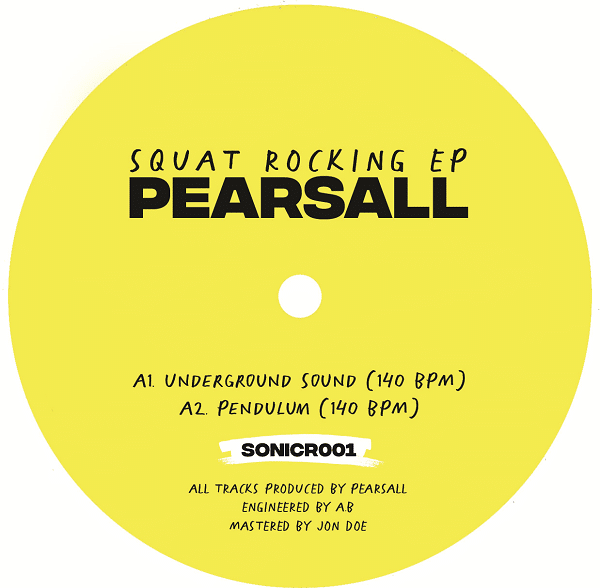
RH: What samples did you use in the end?
P: I’m not saying! We used over 50 samples across the four tracks, and I’d like to leave this as a fun thing for the spotters to figure out what samples I used.
Have at it! 🙂
RH: Were you happy with the outcome of these tracks? Did they match your vision?
P: Yes, I was delighted! The concept I had been pondering for so long had come to life – not 100%, of course, because there were some samples I really wanted to use that we just couldn’t get to work, but in general I was really happy with how the tracks turned out.
I still am!
RH: OK, so this was last October, one year ago … why are these tracks only getting released now?
P: Um, procrastination? That’s the honest answer.
Even after we finished our studio sessions, there were a few details to sort out on some of the tracks, so once I got back into my normal work mode, I just didn’t get around to doing it that quickly. Sorry Alex! It took a while to really finish the tracks, and then I still needed to deal with mastering, artwork, and getting them pressed. Alex recommended the mastering services of Jon Doe, long-time UK hard house / hard trance / hardcore legend, so I was quite happy to use his services, but again that took me some time to get around to. More procrastination!
RH: What about the artwork? It’s pretty incredible!
P: Yeah, it’s amazing!
Originally I wanted my friend Vali NME Click to do it, but he was so busy with preparing the artwork for his massive Message from the Parazone compilation project that he simply didn’t have time to do it. In the end I actually chose Berlin-based Scottish artist Nick Cocozza, an artist who I found via Instagram. He’s been doing artwork for Berlin techno crew Ismus and I just really liked his style, and I thought it could work for the idea I had in my head. Funnily enough once I got in touch I discovered that we had a mutual friend in common – DJ Typewriter from the Begrime crew. Small world, eh?

RH: What was the inspiration for the artwork and how did it come about?
P: Well, above all I wanted the artwork to capture that grimy, sweaty, rugged squat party vibe, but the specific inspiration for the artwork was a, how shall I put it, experience that I had at a Brick Lane squat party in the spring of 1999. What it was exactly I won’t say for now, but it was pretty weird! So to help Nick with the visual inspiration not only did I share with him some of my writings and thoughts, I also shared with him videos and photos from the free party scene, just to give him a sense of the desired aesthetic. I also wanted to incorporate a nod to my all-time favorite comic, Warren Ellis’ Transmetropolitan,’ so I asked Nick to make some of the dancers look almost translucent, a nod to the ‘blur suits’ worn by assasins in Transmetropolitan.
There was quite a bit of back and forth about this, in that I had a vague idea in my head but no clear image, and I think it was at times somewhat difficult for Nick to deal with my sheer amateurism! Like I could not often give a really clear outline of exactly what I wanted, just ‘hey, here’s some ideas, just make it look cool’. Sorry Nick!
Actually I met him in person for the first time two weeks ago and he said that it was one of the most challenging briefs he’s ever had to work on, but that it also pushed him out of his comfort zone, and he’s really proud of the result.
RH: Cool guy, though!
P: Yeah, great dude for sure. I felt a little bad that I wasn’t the best client, not because I was intentionally trying to be difficult, but more because I was just clueless about what you should and should not do when you’re commissioning an illustrator to do something for you.
The final result was really worth it, though. When he sent me the final version I just stared and stared at it. I love all the detail, and how it all hangs together. It’s just amazing in my eyes.
RH: So you had the tracks and you had the art, how did you get it pressed to vinyl?
P: I was really lucky because my buddy Vali made the intro to Handle with Care, and they dealt with everything from there on out with the utmost professionalism. I’ve heard some horror stories about vinyl pressing delays at the moment, but this wasn’t as bad as I was expecting – it probably took four months from initially contacting them to getting the final records in my hands, which seems … fine? I guess in the past things might have been quicker, but there’s more demand for vinyl and fewer plants to service that demand than in the past.
RH: Now you have to sell it.
P: Yes.
RH: And do you have a plan for how to do so?
P: Lol no, of course not. I haven’t done any pre-orders or anything, no promo, nothing like that. I didn’t contact any record stores. I didn’t do any kind of promo campaign to get people to play it. Basically nothing has happened so far on that side. Starting today (October 5th) I’m going to release it myself on Bandcamp and Discogs and put it up for streaming on YouTube and Soundcloud and I’m just going to see what happens.
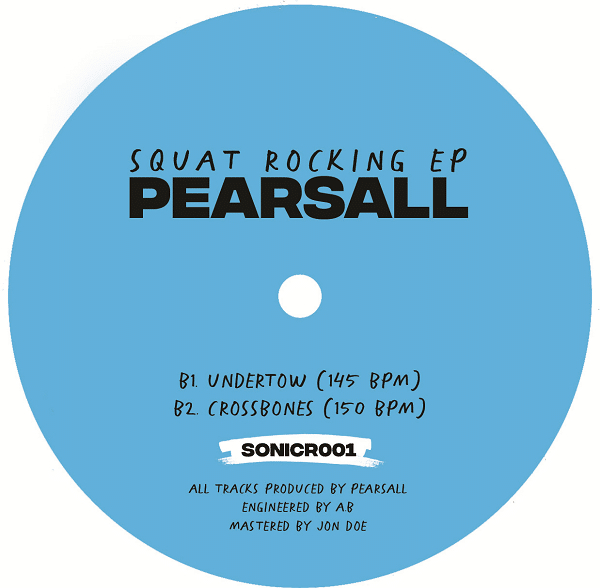
RH: Why? This does not seem like the normal course of action, to be honest.
P: Sure, no question.
I guess there are three things going on here. First, simply, there was the cost of production. Getting a color cover on nice material with color labels – basically having a really nice looking final product – was quite expensive at a per unit cost, given the small pressing I wanted to do. Again this is affected by the fact that vinyl costs have gone up a lot in recent years – material costs are up, and I’m not a regular customer who could qualify for any discounts. Even selling it direct at 12 EUR a pop my profit margin on each item is not exactly massive.
Secondly, from speaking to my friend Mejle about selling via shops or via distributors, it seemed like it would be hard to recoup much of the production costs going via that route, especially since they typically don’t pay you upfront and you have to chase them to get paid. I already have enough going on in my life between work and family – I don’t want to deal with calling and mailing record stores to ask for money. There’s no major time pressures from my end, so I want to start out by seeing how it goes to sell direct. Maybe later this will change!
Finally, there’s also a quasi-philosophical point here. One thing I really liked about the squat party scene back in the day compared to, say, the drum n’ bass scene, was that the tracks were available. There was no secret boys’ club of dubplates that circulated among the big names for months and months until release, at which point only losers would still be playing it. If you were at a squat party and you were listening to an acid techno dj play, the records they were playing were generally things that you yourself could then go to Kinetec or Dragon Disc or wherever a few days later and buy for yourself. I liked that! Maybe you might hear the odd thing on promo before release, but for the most part these weren’t secret records. Everyone could get them! I always found that pretty cool and democratic.
So for my own release I decided to just put it out there and make it available to everyone at the same time. If a modern big name dj wants to pick it up and play it out, that’s great, I would love that, but they don’t get any special privilege of having it in advance over a hobbyist dj … like me!
RH: So after 25 years of toiling in obscurity as a dj, is this all just a belated effort to break through and get some traction?
P: I prefer to say that I’ve spent 25 years enjoying music and working, growing, developing, and expressing myself creatively as a dj. 🙂
I mean, sure, there’s no question that I’m obscure in the wider scheme of things, but that’s really because for a long time I’ve not been interested in becoming a big name dj, nor have I done any of the kinds of things that are prerequisites for success. I’ve flitted between too many genres, I’ve not networked enough, frankly I’ve just not wanted it. As long as I get to play out a couple times a year that’s enough for me – especially with my work and family commitments now I would really struggle to play out even as much as once per month! Also, to be fair, I’ve had a lot of positive feedback about my mixes over the years – it’s a great feeling to know that your creative work has brightened up someone else’s day.
RH: So what do you hope for from this release?
P: Above all, I want these tracks to be played on loud soundsystems and for people to dance to them! That’s the number one goal. Everything else is secondary.
These tracks are my love letter to the rave scene, and really I want them to be experienced loud in a dark room strafed by lasers and flashing lights … in a rave!
Like ideally I would like to sell the stock of records and make a modest profit, but I will live with it if that doesn’t happen, but I really want people to enjoy the record and for the tracks to make people dance. If that can happen, then I’ve contributed in a small way to the happiness of the world, and that’s great. That’s me satisfied. I think the saddest outcome, by far, would be if none of these tracks ever get played out.
I guess I’m just happy with them and I want to share them with other people!
If I could personally be on a dancefloor and hear some other dj play one of the tracks and experience people dancing to it and enjoying it … that would be the ultimate experience! I hope I will get to experience that some day.

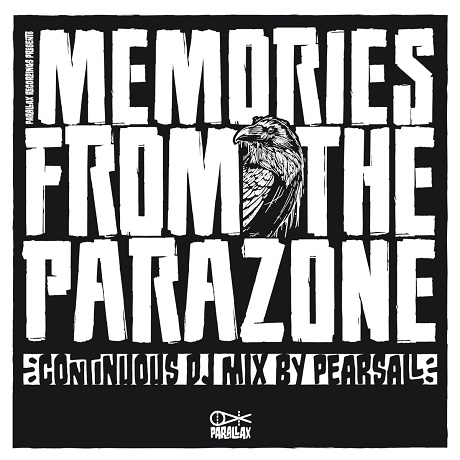
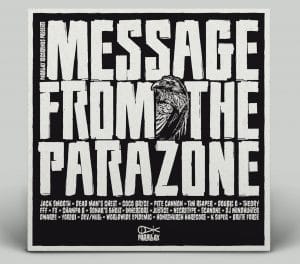
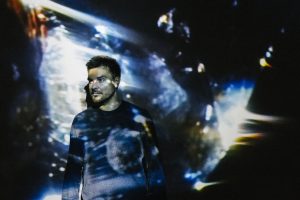


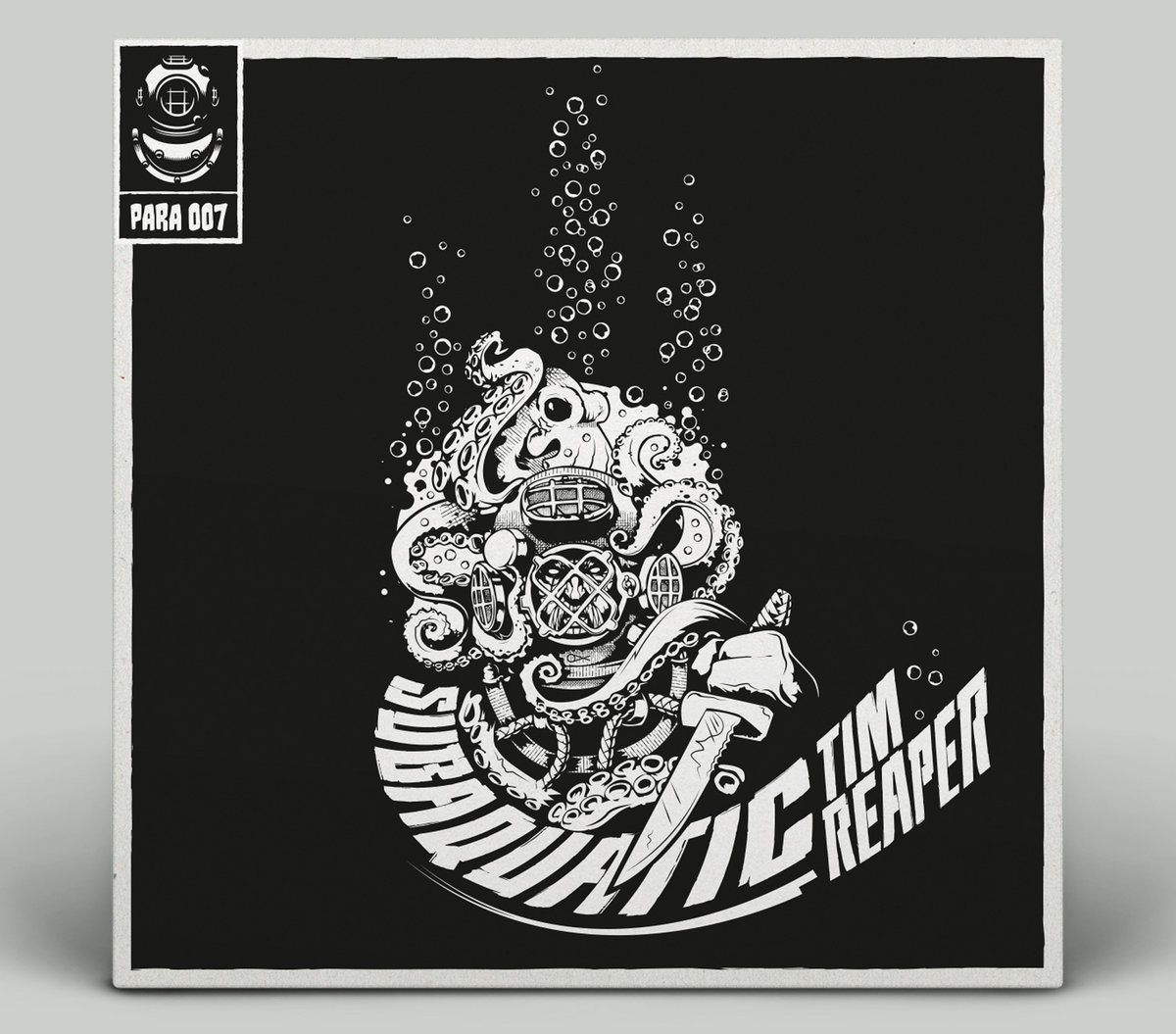
:format(jpeg):mode_rgb():quality(90)/discogs-images/R-18506911-1619669283-6217.jpeg.jpg)
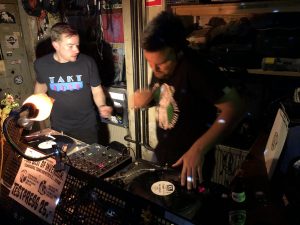
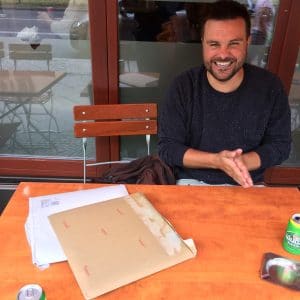
:format(jpeg):mode_rgb():quality(90)/discogs-images/R-13551062-1560532703-1044.jpeg.jpg)

